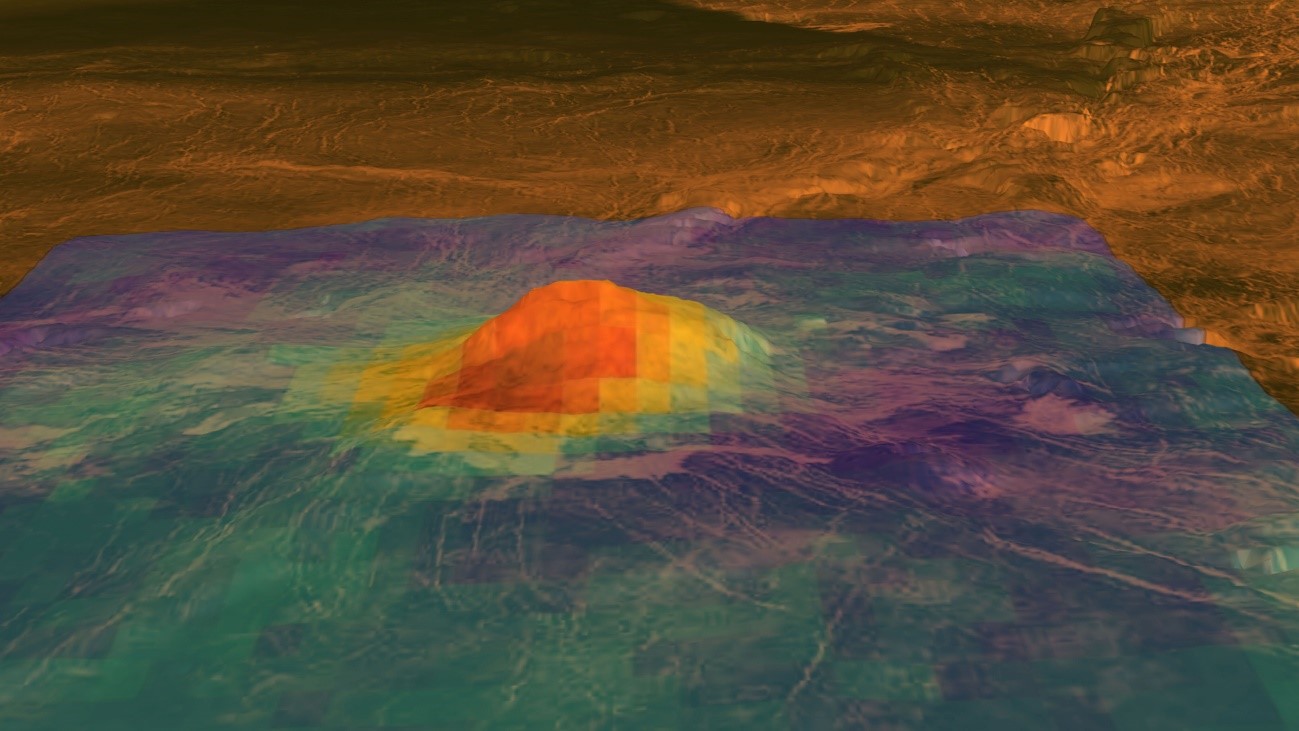Writing/Irene Vega
The international team of scientists has combined different lines of work, from the study of the atmosphere to surface geology, to suggest that Venus may be active like its planetary brother Earth. This is the main conclusion of work recently published in The Planetary Science Journal.
Already in 2010, ESA's Venus Express spacecraft first observed near-infrared emissivity anomalies on the eastern flank of the Idunn Mons volcano, which is more than 200 km in diameter. These types of emissivity anomalies suggest that they are unaltered volcanic flows, which would imply that the activity in this volcano is recent. The study of these data concluded that the volcanic eruptions could have taken place in the last few million years.
The study now carried out by this international group of scientists has addressed the problem of activity in Idunn Mons from a multidisciplinary perspective, using data from the surface and also from the atmosphere. "This is the first time that different lines of evidence have been combined to suggest that there may be volcanic eruptions on another terrestrial planet other than Earth," explains Piero D'Incecco, the lead author of the work, a planetary geologist at the Department of Engineering-Geology of the University of Studi G. d'Annunzio, in Chieti-Pescara, Italy.
The geological interpretation of the area shows that Idunn Mons may have recently erupted and that it is located in an area where tectonic activity is also very important and quite current. In order to better understand the possible age of the emitted materials, laboratory experiments have been carried out to study the chemical alteration of the materials under the conditions of Venus. These studies have revealed that this alteration is very rapid, on the order of months to years. This suggests that the emissivity anomalies detected in 2010 may represent really young materials that have been emitted very recently.
Another possible line of evidence about active volcanism in the area comes from the study of the atmosphere. Wind speed anomalies have been detected in the lower atmosphere, just above the volcano. These alterations may be related to the presence of active volcanism in the area. “It is very important to study areas where there may be active volcanism to study the presence and distribution of gases in the atmosphere. The presence of some of these gases, such as phosphane, has recently been suggested and has been related to the possible presence of microbial life on Venus”, says Piero D'Incecco.
In the next decade, different NASA and ESA missions will study Venus with various instruments to try to discover the secrets about the geological evolution of our planetary neighbor. “Discovering whether Venus is a volcanically active planet is essential for models of the geological evolution of the terrestrial planets. Idunn Mons is a perfect candidate to be studied by these future missions and determine the presence of active volcanism”, points out Iván López, Planetary Geologist at the Rey Juan Carlos University and co-author of the work.
The team of researchers includes planetary scientists, some of them involved in future missions to Venus, from different countries and institutions: Piero D'Incecco (University of Announcement, Chieti-Pescara, Italy / Arctic Planetary Science Institute, Rovaniemi, Finland), Justin Filiberto (Astromaterials Research and Exploration Science, NASA Johnson Space Center, Houston, Texas, USA; co-investigator of NASA's DAVINCI+ mission), Iván López (Rey Juan Carlos University, Madrid, Spain), Dmitry Gorinov (Space Research Institute of the Russian Academy of Sciences, Moscow, Russia; scientific member of the Venera-D mission) and Goro Komatsu (University of Announcement, Chieti-Pescara/ International Research School of Planetary Sciences, Pescara, Italy; member of the Science Study Team of the European Space Agency's EnVision mission).




